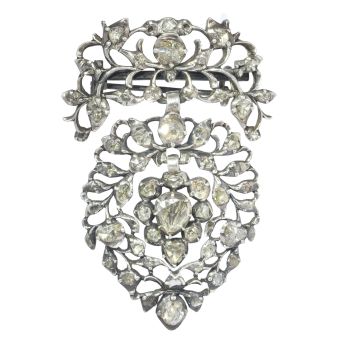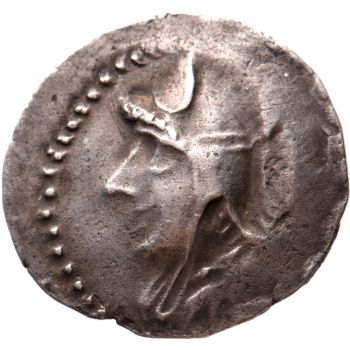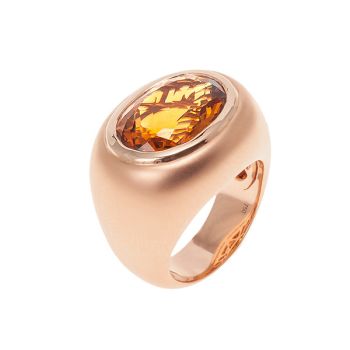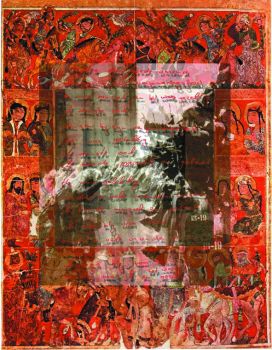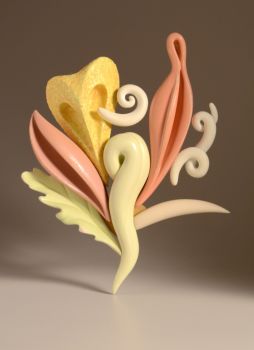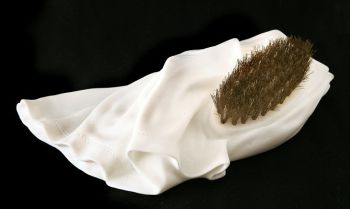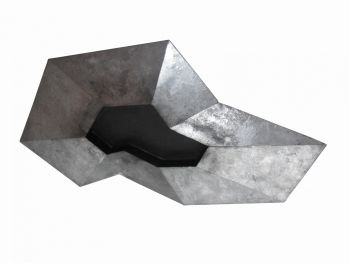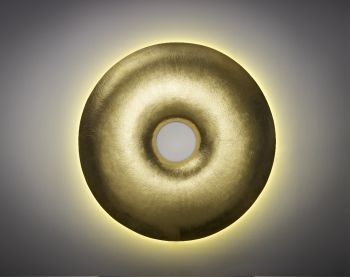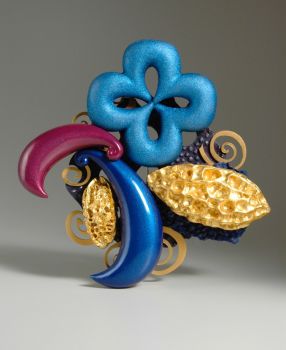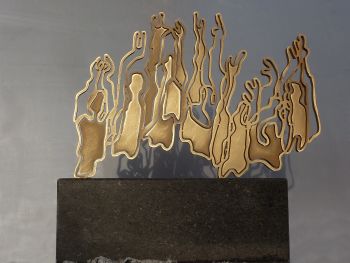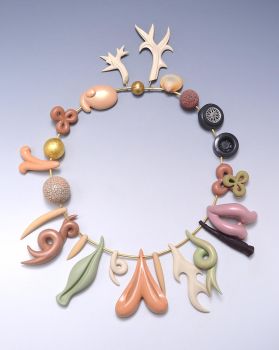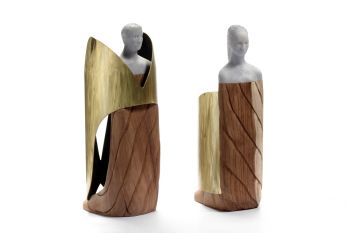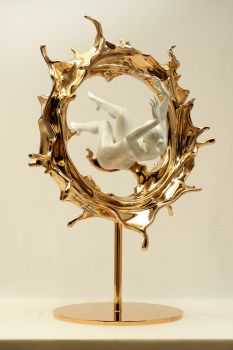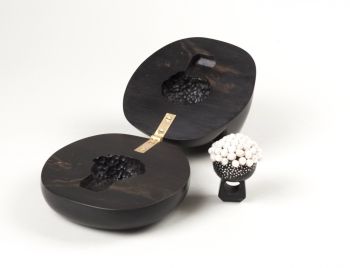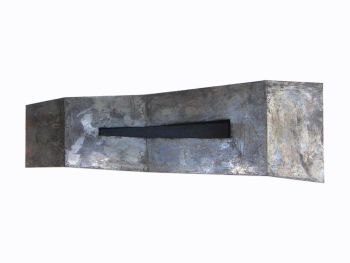Dutch colonial chest, 18th century 1750 - 1800
Artista Sconosciuto
EbanoLegnaMetalloOttone
50 ⨯ 91 ⨯ 62 cm
ConditionGood
€ 2.500
Verkoulen Oriental & European Antiques
- A proposito di opere d'arteA compact Dutch colonial storage chest of tropical hardwood on bun feet, late 18th century, around 1750-1800, Indian Ocean area.
Dimensions: 50x91x62 cm.
Indispensable in the interior of the East was a storage or ship's chest. Made out of tropical hardwood they could withstand the humid and warm climate in the colonies. Because East India Company officials or colonial habitants traveled a lot between the colonial island in the archipel and ocean, the need of storage space for personal items were high and chests had to be compact and strong. The chests were not only useful in India but also for the long lasting way back to Europe. It is known that these chest were also sold in Holland to people who had noting to do with the colonies.
This specific chest was probably made in Sri-Lanka, or less likely Batavia (Jakarta). The brass lock plate has beautiful cut motifs, while the fittings on the sides have a strikingly cut-out heart pattern in them. The sides of the top as well as the edges at the bottom have black paint to imitate ebony wood.
Condition: Good, restored ebonising/surface. - A proposito di opere artista
Può succedere che un artista o un creatore sia sconosciuto.
Alcune opere non sono determinate da chi sono state realizzate o sono state realizzate da (un gruppo di) artigiani. Esempi sono statue dell'antichità, mobili, specchi o firme non chiare o leggibili ma anche alcune opere non sono affatto firmate.
Inoltre puoi trovare la seguente descrizione:
•"Attribuito a …." A loro avviso probabilmente opera dell'artista, almeno in parte
•“Studio di ….” o “Officina di” A loro avviso un'opera eseguita nello studio o nella bottega dell'artista, eventualmente sotto la sua supervisione
•“Cerchio di…” A loro avviso un'opera del periodo dell'artista che mostra la sua influenza, strettamente legata all'artista ma non necessariamente al suo allievo
•"Stile di..." o "Seguace di..." A loro avviso un'opera eseguita nello stile dell'artista ma non necessariamente da un allievo; può essere contemporaneo o quasi contemporaneo
•“Modalità di…” A loro avviso un'opera nello stile dell'artista ma di epoca successiva
•"Dopo …." A loro avviso una copia (di qualsiasi data) di un'opera dell'artista
•“Firmato…”, “Datato…” o “Iscritto” A loro avviso l'opera è stata firmata/datata/inscritta dall'artista. L'aggiunta di un punto interrogativo indica un elemento di dubbio
•"Con firma....", "Con data...", "Con iscrizione..." o “Riporta firma/data/iscrizione” a loro avviso la firma/data/iscrizione è stata aggiunta da qualcuno diverso dall'artista
Sei interessato ad acquistare questa opera d'arte?
Artwork details
Related artworks
- 1 - 4 / 12
Joseph Savart
Four portraits of women of Guadeloupe1769
Prezzo su richiestaZebregs & Röell - Fine Art - Antiques
Artista Sconosciuto
A superb Indonesian royal gem-set gold overlaid silver betel box19th century
Prezzo su richiestaZebregs & Röell - Fine Art - Antiques
Paulus Franciscus Kromjong
Fiori davanti ad Arearea Aka (gioia) di Gauguin'20th century
Prezzo su richiestaZebregs & Röell - Fine Art - Antiques
Thea G.F. Eschauzier
Ritratto di una ragazza giavanese1931
Prezzo su richiestaZebregs & Röell - Fine Art - Antiques
Artista Sconosciuto
A silver spoon commemorating Juff’ Margareta van Hoorn1656 - 1694
Prezzo su richiestaZebregs & Röell - Fine Art - Antiques
Hubert Vos
Ritratto di un punjabi nell'India britannica1898
Prezzo su richiestaZebregs & Röell - Fine Art - Antiques
Artista Sconosciuto
A Surinam-themed Amsterdam long-case clock1746 - 1756
Prezzo su richiestaZebregs & Röell - Fine Art - Antiques
 A cura di
A cura diGallerease Magazine
Artista Sconosciuto
Japanese transition-style lacquer coffer 1640 - 1650
Prezzo su richiestaZebregs & Röell - Fine Art - Antiques
Artista Sconosciuto
UN INSOLITO PIATTO D'ARGENTO LOBBATO INDONESIlate 17th
Prezzo su richiestaZebregs & Röell - Fine Art - Antiques
Artista Sconosciuto
A Dutch colonial Indonesian betel box with gold mounts1750 - 1800
Prezzo su richiestaZebregs & Röell - Fine Art - Antiques
1 - 4 / 24Artista Sconosciuto
A superb Indonesian royal gem-set gold overlaid silver betel box19th century
Prezzo su richiestaZebregs & Röell - Fine Art - Antiques
Artista Sconosciuto
A Dutch colonial Indonesian betel box with gold mounts1750 - 1800
Prezzo su richiestaZebregs & Röell - Fine Art - Antiques
Artista Sconosciuto
Japanese transition-style lacquer coffer 1640 - 1650
Prezzo su richiestaZebregs & Röell - Fine Art - Antiques
Artista Sconosciuto
A rare Japanese export lacquer medical instrument box1650 - 1700
Prezzo su richiestaZebregs & Röell - Fine Art - Antiques
Artista Sconosciuto
UN RARO SADELI INDIANO COMPLETO DI LAVORO E SCRITTURA INTARSIATI1800 - 1850
Prezzo su richiestaZebregs & Röell - Fine Art - Antiques
Artista Sconosciuto
COPPIA DI TORCHÈRE O PORTACANDELE IN TEAK INDONESI LACCATI E DORATI18th century
Prezzo su richiestaZebregs & Röell - Fine Art - Antiques
1 - 4 / 24Firm Erhard & Sohne, Schwäbisch Gmünd
Erhard und Söhne – Jugendstil intarsia klok – 1908 / 19091900 - 1909
Prezzo su richiestaAntiques Emporium
1 - 4 / 24- 1 - 4 / 8





